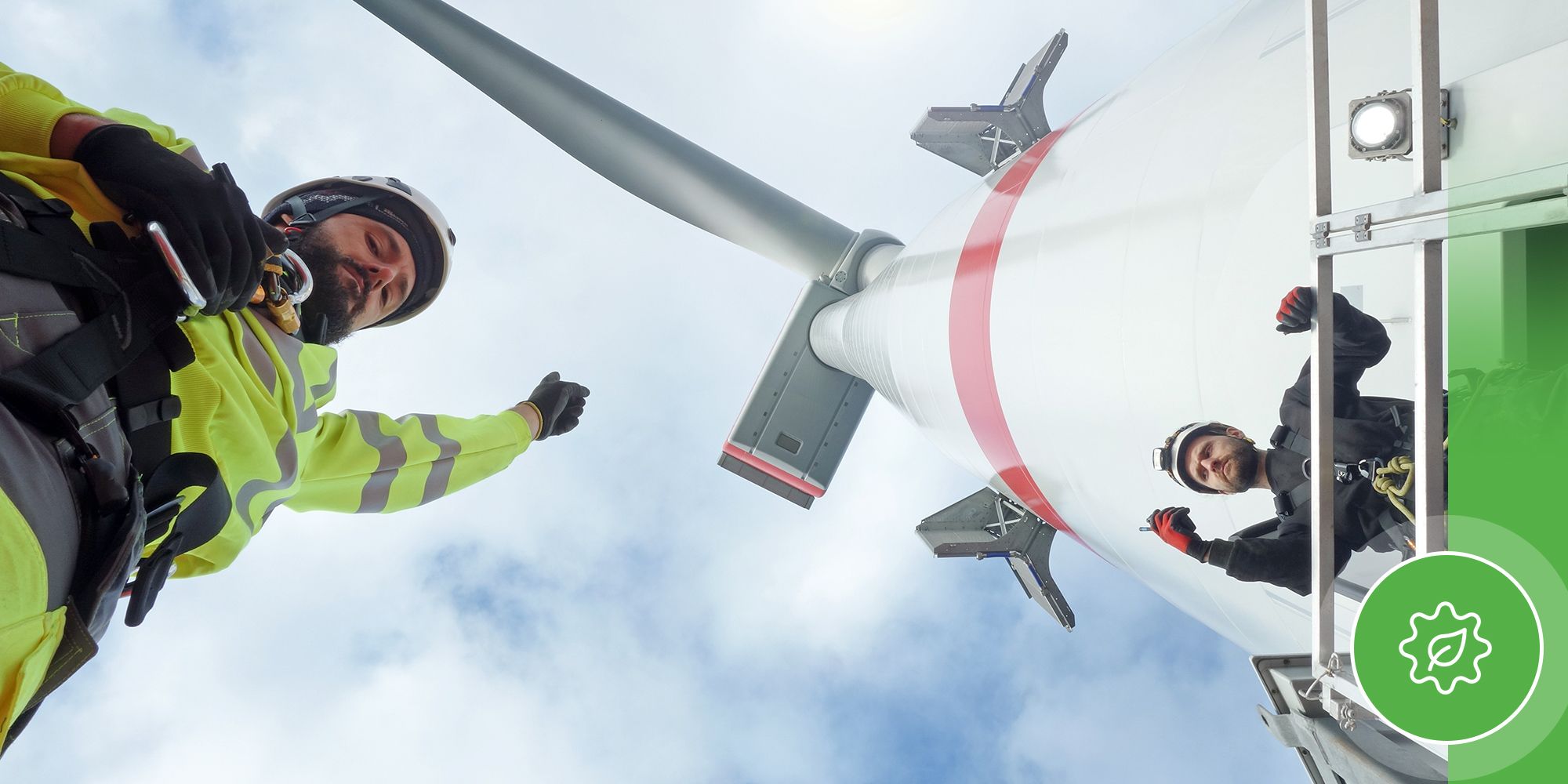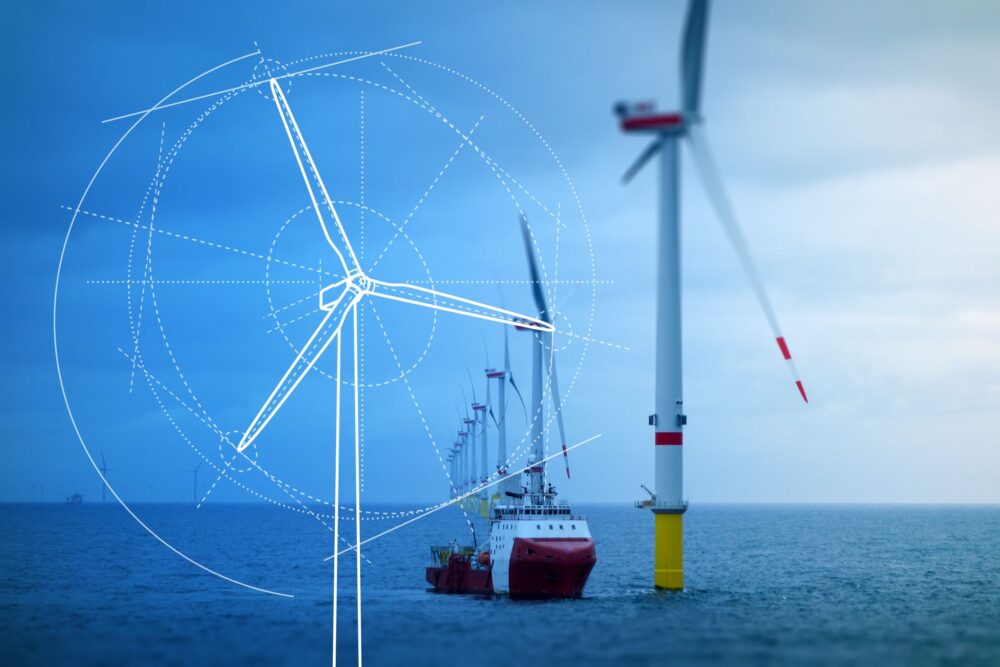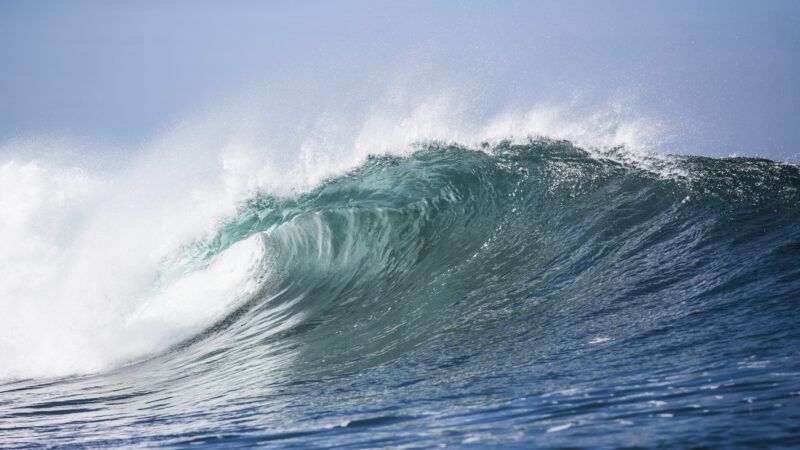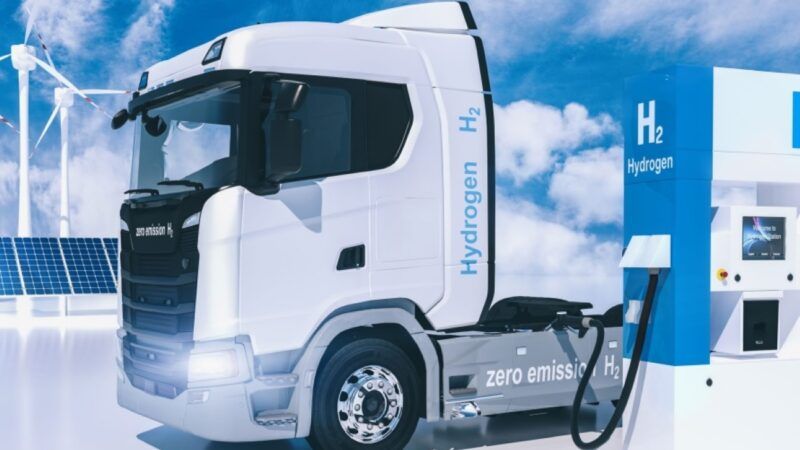What is offshore wind energy?
Offshore wind energy is a renewable and unlimited source of energy that takes advantage of the force of the wind produced at sea to generate electricity.
This energy is produced in offshore wind farms, which are installed in maritime areas located far from the coast, ship routes, oil platforms and protected natural areas.
Wind turbines use the kinetic force generated by the rotor blades to convert it into electricity which is then transported to land through cables buried in the seabed. Later on, it is converted into high voltage by transformers and distributed.
Marine renewable energy in Europe
In 2020, Europe installed 14.7 gigawatts (GW) of land and wind energy, although 80% corresponds to the first. The Netherlands was the only country which made a firm commitment to offshore wind, since 75% of its 1.98 GW installed was done at sea. In Europe, the United Kingdom leads the ranking with 40 wind farms installed totaling 2,294 turbines, followed by Germany, Denmark, Belgium and the Netherlands.
According to the tool available on the WindEurope association website that shows the daily consumption of renewable wind energy in Europe, on April 25, 937 GWh came from onshore wind farms and 148 GWh from offshore wind energy, the 13,1% and 2.1% of the total energy consumed in Europe, respectively.

Offshore wind technology in constant evolution
The first offshore wind turbines were practically identical to those installed on land; they were attached at sea depths of up to 50 meters using less corrosive materials than in land. However, in deeper waters, this system began to be unfeasible, which is why several floating systems inspired by oil platforms were devised, as explained by José Luís Domínguez, head of Power Systems Group at the Institut de Recerca en Energia de Catalunya, in the round table 'Offshore wind energy. An opportunity for the energy transition, research and industry in Catalonia?’
Floating structures are used from 50 meters onwards. These are divided into three types: a mast buoy with catenary mooring anchored to the bottom; a buoy with a stabilized mooring line, anchored by a suction system, and a third type consisting of a floating structure similar to a barge with a catenary mooring line.
Advantages and challenges versus onshore wind
A decade ago, the power of offshore turbines was 4 MW (megawatts). Right now, they have surpassed the 9 MW threshold, while those used onshore average 2 MW. "There are more wind resources at sea and at higher speed and, therefore, a higher production per wind turbine," said Climent Molins Borrell, professor of the Department of Civil and Environmental Engineering at the Polytechnic University of Catalonia at the aforementioned round table.
Molins added that another advantage is the absence of visual impact from offshore wind turbines and natural and artificial barriers, which makes it easier for the wind speed to be equal at any point in the turbine.
However, there are a number of challenges. The first and most important, quoting Joaquim Coello, member of the Catalunya-Next Generation EU Advisory Committee, is the degree of reliability of offshore wind turbines, since repairing an offshore turbine is five times more expensive than one located inland.
On average, a rotor turns at a speed of between 15 and 20 revolutions per minute. The larger the size, the lower the turning speed. The speed production occurs via two systems: with turbines that have a generator directly connected to the rotor or by connecting a multiplier to the generator. The latter accelerates the 20 revolutions of the rotor to 1,300.
“Those without multipliers have a very complex, large and expensive generator, but extremely reliable. However, the turning speed is not constant because it depends on the wind speed, which causes the generated current to be of a variable frequency, something that must be rectified because the network requires constant current. This transformation process involves energy losses of the order of 3% and 4%,” highlighted Coello at the round table.
As with onshore wind power, the expert also emphasized the need for states to subsidize marine renewable energy, both its installation and energy transportation, since the market pays around 50 euros per GWh and marine wind power has a cost of 150 per GWh. This differential should be assumed by local governments to enhance its attractiveness within the energy market.
 The market pays 50 euros/GWh and offshore wind costs 150 euros/ GWh. Governments should subsidize the difference to enhance its appeal. (GettyImages/PierNext)
The market pays 50 euros/GWh and offshore wind costs 150 euros/ GWh. Governments should subsidize the difference to enhance its appeal. (GettyImages/PierNext)
 The market pays 50 euros/GWh and offshore wind costs 150 euros/ GWh. Governments should subsidize the difference to enhance its appeal. (GettyImages/PierNext)
The market pays 50 euros/GWh and offshore wind costs 150 euros/ GWh. Governments should subsidize the difference to enhance its appeal. (GettyImages/PierNext)






